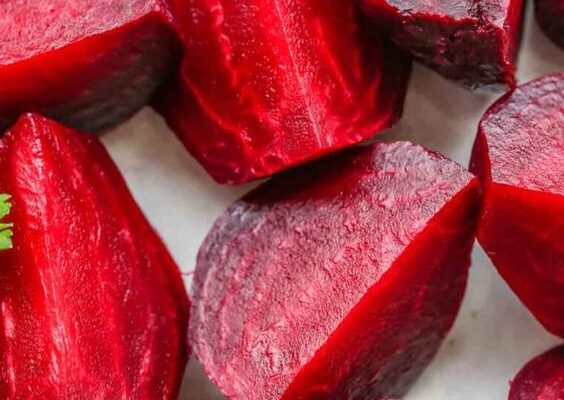Exploring the Bounty of Red Beetroot: A Nutrient-Rich Root Vegetable with Culinary Versatility
Red beetroot, commonly referred to as beets, is a versatile and nutritious root vegetable that has been enjoyed for centuries. Known for its vibrant color and earthy flavor, beets offer a wide range of health benefits and culinary possibilities. In this article, we will explore the nutritional value, health benefits, and various culinary uses of red beets.

Nutritional Value: Red beets are a nutritional powerhouse. They are an excellent source of essential vitamins, minerals, and antioxidants. Here are some key nutritional components of red beets:
Vitamins: Beets are rich in vitamins such as vitamin C, which boosts the immune system, and vitamin B9 (folate), essential for cell growth and development.
Minerals: They are a good source of minerals like potassium, which helps regulate blood pressure, and manganese, important for bone health.
Dietary Fiber: Beets contain both soluble and insoluble fiber, aiding digestion and promoting a feeling of fullness.
Antioxidants: Red beets are loaded with antioxidants, particularly betalains, which have anti-inflammatory and detoxification properties.
Health Benefits: Consuming red beets can offer a range of health benefits:
Heart Health: The nitrates in beets can help lower blood pressure and reduce the risk of heart disease.
Improved Digestion: The fiber in beets supports digestive health and helps prevent constipation.
Cognitive Function: Beets have been linked to improved cognitive function and may help protect against cognitive decline.
Detoxification: The antioxidants in beets support the body’s natural detoxification processes.
Cancer Prevention: Some studies suggest that betalains in beets may have anti-cancer properties.
Culinary Uses: Red beets can be prepared in various ways, making them a versatile addition to your diet. Here are some common culinary uses:
Salads: Beetroot can be grated or sliced and added to salads, providing a sweet and earthy flavor.
Juices: Fresh beet juice is popular for its vibrant color and health benefits. It can be combined with other fruits and vegetables for a nutritious beverage.
Roasted or Boiled: Beets can be roasted or boiled and served as a side dish with herbs and spices.
Soups: Beetroot is a key ingredient in borscht, a traditional Eastern European soup.
Pickled: Beets can be pickled to enhance their shelf life and create a tangy, flavorful condiment.
Red beetroot, commonly referred to as beets, is a versatile and nutritious root vegetable that has been enjoyed for centuries. Known for its vibrant color and earthy flavor, beets offer a wide range of health benefits and culinary possibilities. In this article, we will explore the nutritional value, health benefits, and various culinary uses of red beets.

Nutritional Value: Red beets are a nutritional powerhouse. They are an excellent source of essential vitamins, minerals, and antioxidants. Here are some key nutritional components of red beets:
Vitamins: Beets are rich in vitamins such as vitamin C, which boosts the immune system, and vitamin B9 (folate), essential for cell growth and development.
Minerals: They are a good source of minerals like potassium, which helps regulate blood pressure, and manganese, important for bone health.
Dietary Fiber: Beets contain both soluble and insoluble fiber, aiding digestion and promoting a feeling of fullness.
Antioxidants: Red beets are loaded with antioxidants, particularly betalains, which have anti-inflammatory and detoxification properties.
Health Benefits: Consuming red beets can offer a range of health benefits:
Heart Health: The nitrates in beets can help lower blood pressure and reduce the risk of heart disease.
Improved Digestion: The fiber in beets supports digestive health and helps prevent constipation.
Cognitive Function: Beets have been linked to improved cognitive function and may help protect against cognitive decline.
Detoxification: The antioxidants in beets support the body’s natural detoxification processes.
Cancer Prevention: Some studies suggest that betalains in beets may have anti-cancer properties.
Culinary Uses: Red beets can be prepared in various ways, making them a versatile addition to your diet. Here are some common culinary uses:
Salads: Beetroot can be grated or sliced and added to salads, providing a sweet and earthy flavor.
Juices: Fresh beet juice is popular for its vibrant color and health benefits. It can be combined with other fruits and vegetables for a nutritious beverage.
Roasted or Boiled: Beets can be roasted or boiled and served as a side dish with herbs and spices.
Soups: Beetroot is a key ingredient in borscht, a traditional Eastern European soup.
Pickled: Beets can be pickled to enhance their shelf life and create a tangy, flavorful condiment.



